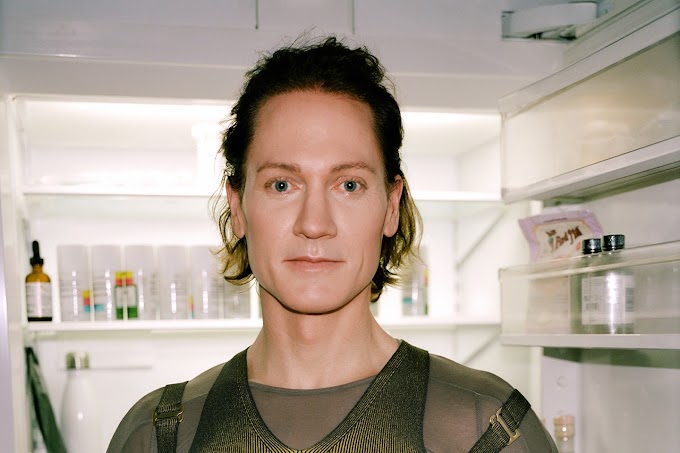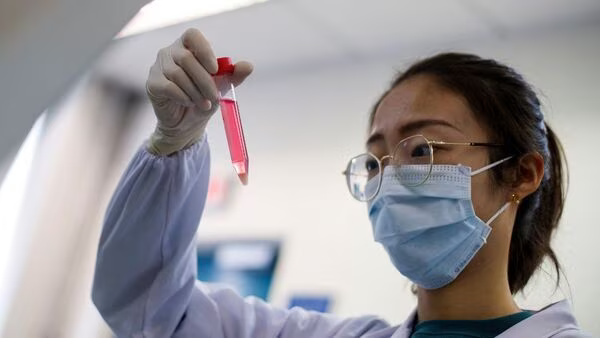In a recent discovery, scientists have discovered how bowhead whales manage to live for more than 200 years and how they maintain extraordinarily low cancer rates. The answer lies not in eliminating damaged cells, but in repairing them with great accuracy.
Recent Study Reveals How Nature’s Longest Lived Mammal Defies Cancer.
Published: October 29, 2025 in Nature
The Discovery
A research team at the University of Rochester found that bowhead whales have enhanced DNA double-strand break repair capacity and fidelity. This results in lower mutation rates than cells of other mammals. The study, published in the prestigious journal Nature on October 29, 2025, identifies a specific protein called CIRBP (cold-inducible RNA-binding protein) as the key player in this extraordinary ability.
The DNA-repair protein CIRBP was present at 100-fold higher levels in bowhead whales compared to other mammals. This huge difference appears to be the secret weapon that allows these massive creatures to maintain genome integrity throughout their extraordinarily long lives.
Peto’s Paradox
To appreciate the significance of this discovery, we must first understand one of biology’s most intriguing mysteries i.e. Peto’s paradox.
Named after English statistician and epidemiologist Richard Peto, Peto’s paradox is the observation that : at the species level, the incidence of cancer does not appear to correlate with the number of cells in an organism. In simple terms, whales with quadrillions of cells don’t get proportionally more cancer than humans with our mere trillions of cells.
The logic behind the paradox is straightforward: every cell division carries a small risk of introducing mutations that could lead to cancer. Larger animals have vastly more cells, and longer-lived animals have more time for mutations to accumulate. So theoretically, a blue whale should be overwhelmed by cancer, but this doesn’t happen.
For instance, the incidence of cancer in humans is much higher than the incidence of cancer in whales, despite of a whale having about 1000 times more cells than a human. This suggests that large, long-lived animals must have evolved sophisticated mechanisms to suppress cancer far more effectively than humans.
The Bowhead Whale
At more than 200 years, the maximum lifespan of the bowhead whale exceeds that of all other mammals. The bowhead is also the second-largest animal on Earth, reaching over 80,000 kg. Traditional Alaskan Iñupiat Inuit hunters have long maintained that these whales “live two human lifetimes,” a claim which modern science has now confirmed.
Despite their enormous size and extended lifespan, bowhead whales are not highly cancer-prone, a perfect embodiment of Peto’s paradox.
The Unexpected Finding
The research team initially hypothesized that bowhead whale cells would require more oncogenic “hits” cancer-causing mutations, to transform into malignant cells. Unexpectedly, bowhead whale fibroblasts required fewer oncogenic hits to undergo malignant transformation than human fibroblasts.
This surprising result pointed that the whales’ cancer resistance doesn’t come from being harder to damage, but rather from preventing damage in the first place.
CIRBP Repair Protein
The researchers discovered that bowhead whale CIRBP enhanced both non-homologous end joining and homologous recombination repair in human cells, reduced micronuclei formation, promoted DNA end protection, and stimulated end joining in vitro.
In other words, CIRBP improves both major pathways cells use to repair double-strand DNA breaks which is the most dangerous type of DNA damage. Double-strand breaks occur when both strands of the DNA double helix are severed, and if its unrepaired or repaired incorrectly then it can lead to cancer.
Experimental Validation
To test whether CIRBP’s benefits extend beyond whales, the team conducted experiments with other species as well:
When the team added bowhead whale CIRBP to human cell cultures, it enhanced repair of double-stranded DNA breaks. Even more surprisingly, CIRBP overexpression in Drosophila (fruit flies) extended lifespan and improved resistance to irradiation.
These cross-species experiments demonstrate that CIRBP’s repair-enhancing properties can function in organisms separated by hundreds of millions of years of evolution.
The Cold Connection
One aspect of discovery relates to the protein’s name: cold-inducible RNA-binding protein. The researchers discovered that cells make more CIRBP protein when temperatures are lowered by just a few degrees.
This makes evolutionary sense for an Arctic species that spends its entire life in frigid waters. The bowhead whale’s adaptation to extreme cold environments may have inadvertently provided it with a powerful anti-aging mechanism.
A Different Strategy for Cancer Prevention
These findings provide evidence supporting the hypothesis that rather than relying on additional tumour suppressor genes to prevent oncogenesis, the bowhead whale maintains genome integrity through improved DNA repair.
This represents a very different approach to solving Peto’s paradox compared to other large animals. Elephants, for instance, have evolved extra copies of the tumor suppressor gene TP53, which causes cells with DNA damage to die before they become cancerous. In contrast, bowhead whales appear to faithfully repair damaged cells rather than destroying them.
How Other Species Solve Peto’s Paradox
Research on Peto’s paradox has revealed that different species have evolved distinct solutions:
Elephants: Elephants have enhanced capability to repair DNA damage through extra copies of TP53 protein, which can slows cell growth during DNA repair or can trigger cell death if damage can not be repaired.
Naked Mole Rats: These long-lived rodents use a form of hyaluronic acid and a highly sensitive tumor suppressor pathway that blocks cell proliferation.
Cell Size and Metabolism: Large organisms have bigger and slowly dividing cells and lower energy turnover, which significantly reduces the risk of cancer initiation. Larger cells divide more slowly, which means there are very few opportunities for mutations and their lower metabolic rates produce less oxidative stress.
Implications for Human Health
The discovery has significant potential for human medicine. The researchers hope that this protein could, one day, help prevent cancer and ageing in humans.
Lead researcher Vera Gorbunova emphasized the exciting possibilities:
The most exciting take-home message here is that there is room for improvement. We can make our DNA repair better.
The research team is now conducting experiments to test whether boosting CIRBP levels in mice can extend their lifespan. They’re also exploring practical ways to increase CIRBP production in humans. It includes the possibility that cold exposure like cold showers might stimulate production of this protein.
What’s the Broader Picture?
This study exemplifies how comparative biology can reveal fundamental insights about aging, cancer, and longevity. Nature has been conducting these evolutionary experiments for millions of years. Its been testing countless strategies for surviving and thriving. By examining how these different species have solved similar problems, we can also identify the most promising biological mechanisms to target with medical interventions.
Rather than eliminating damaged cells, the bowhead whale’s strategy of faithfully repairing them may be contributing to the exceptional longevity and low cancer incidence in this species.
There is much remains to be understood about how CIRBP works at the molecular level and how it could be safely enhanced in humans. However, this discovery represents a significant advance in longevity research. The protein’s ability to function across vastly different species suggests that the underlying mechanisms of DNA repair are so deeply conserved in evolution.
The bowhead whale, swimming through Arctic waters for two centuries, has shown us that extraordinary longevity with low disease burden is not just theoretically possible, but it’s a reality that evolution has already achieved. The challenge now is to understand these natural mechanisms well enough to harness them for human benefit.
Reference:
Firsanov, D., Zacher, M., Tian, X., et al. (2025). Evidence for improved DNA repair in long-lived bowhead whale.








0 Comments